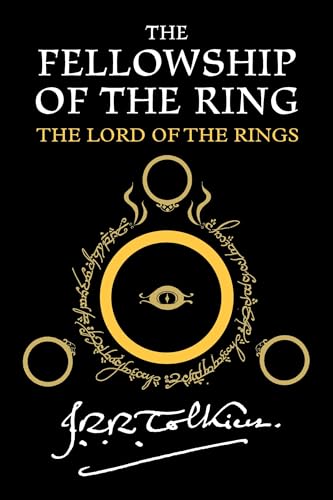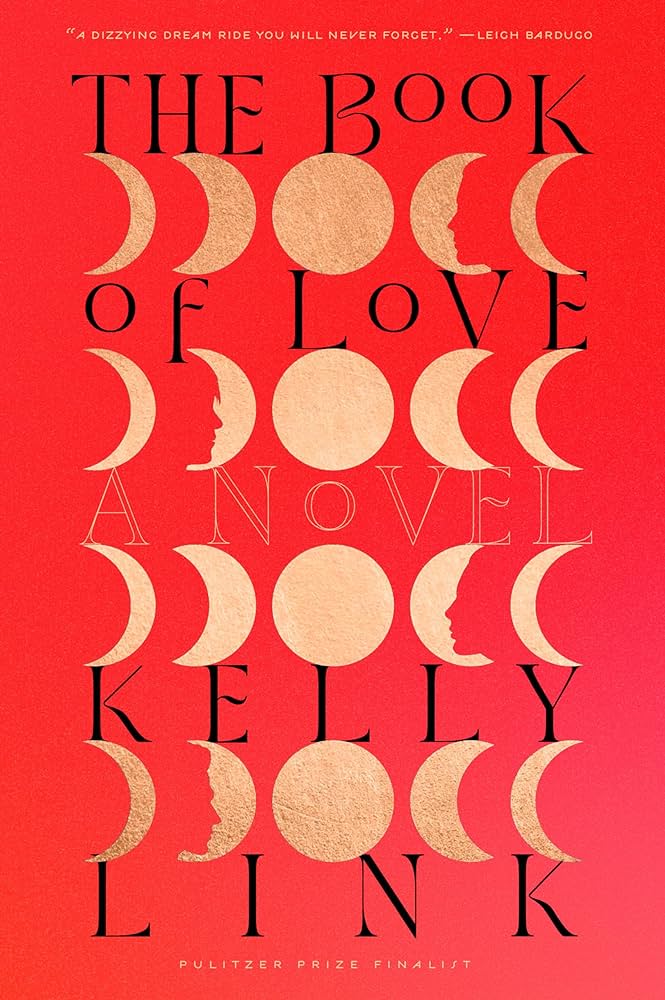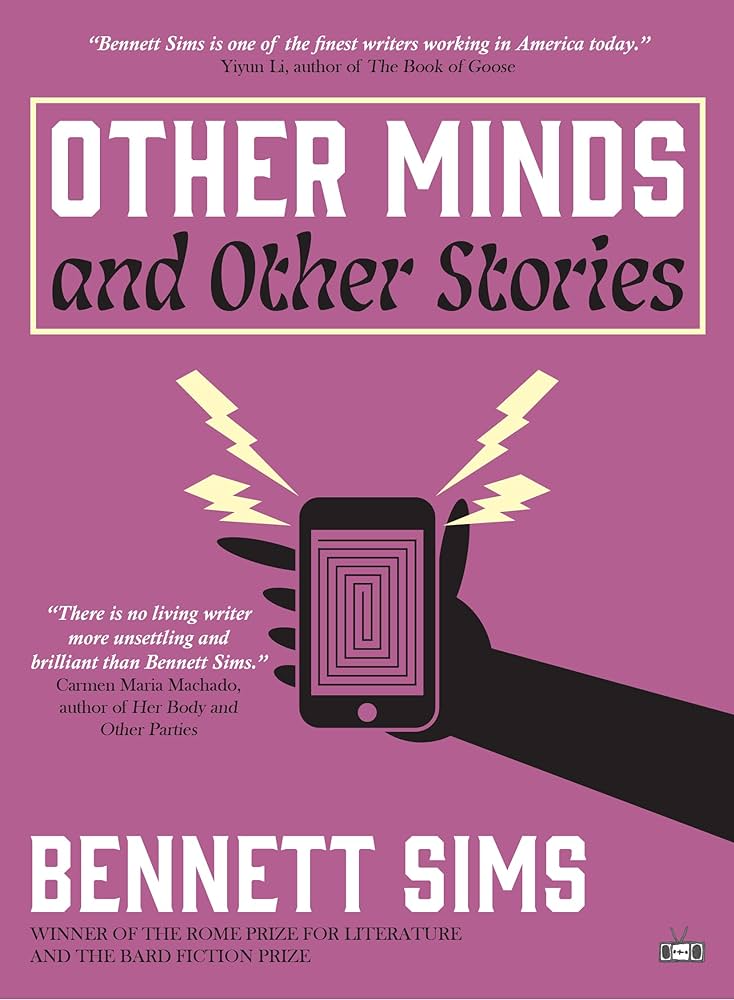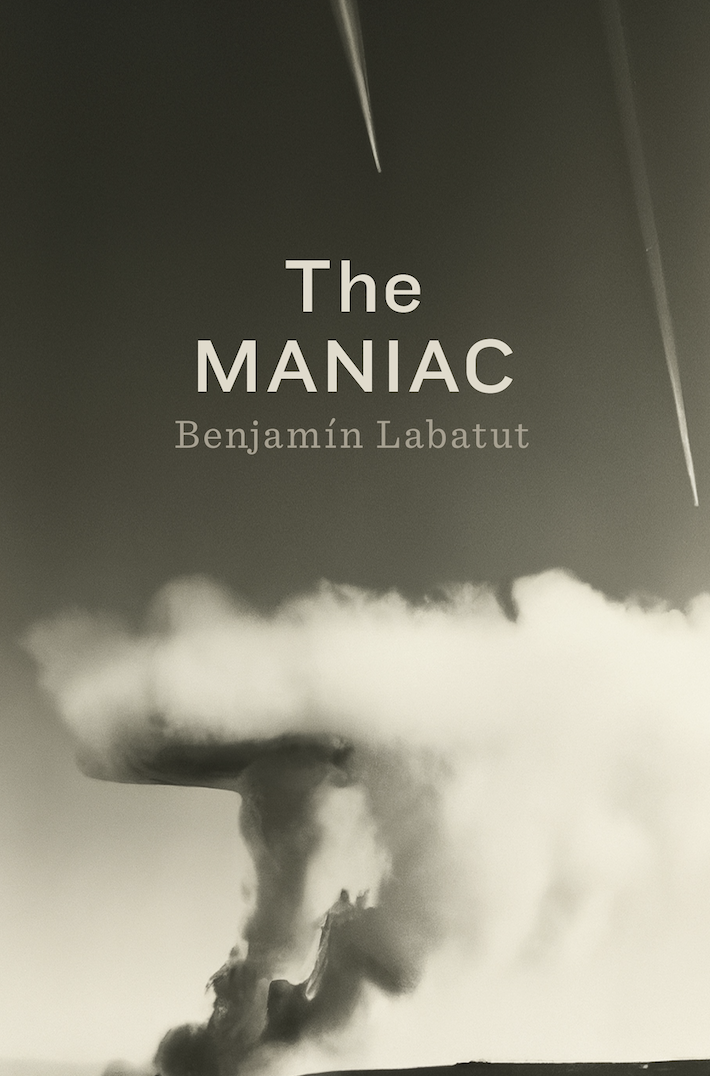
Well-heeled critics take a kind of offense when writers of David Mitchell’s caliber experiment with genre fiction. Nonetheless, the release of 2014’s The Bone Clocks, with its body-jumping Horologists and systematic references to most of his previous novels, proved that Mitchell has embarked on more than an experiment; he is on a Yeatsian search for unity. Late in his life, W.B. Yeats, the famous Irish poet, published A Vision, a collection of cultish metaphysical writings that cast the whole of history as a cycle between order and chaos, the barbaric and the civilized. His poetry of the period also represented the world this way: his famous piece “The Second Coming” culminates with the image of a “rough beast…slouch[ing] towards Bethlehem to be born,” a kind of un-Christ who represents the beginning of a barbaric period in history, the inversion of the Christian era.

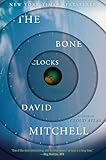 The purpose of all Yeats’s late writing, as the scholar Richard Ellmann pointed out in Yeats: The Man and the Masks, was to offer a “unified personality,” to give his readers a sense of cohesion that everyday life lacks by using a consistent set of symbols to discuss, praise, mourn, and process a disjointed reality. For Yeats, symbols like beasts, roses, and winding staircases were touchstones: no matter where his writing wandered, these landmarks offered a sense of direction — they brought him back to A Vision’s unified historical scheme. The poems he made with those images are beautiful and timeless. But A Vision is another story. Supposedly sourced from automatic writings Yeats’s wife received from the spirit world, it reads like an acid trip in a Catholic church, or — appropriately enough — like a scene from David Mitchell’s Slade House: a horror novel set in a dark corner of the newly-minted meta-world that unites all of Mitchell’s books.
The purpose of all Yeats’s late writing, as the scholar Richard Ellmann pointed out in Yeats: The Man and the Masks, was to offer a “unified personality,” to give his readers a sense of cohesion that everyday life lacks by using a consistent set of symbols to discuss, praise, mourn, and process a disjointed reality. For Yeats, symbols like beasts, roses, and winding staircases were touchstones: no matter where his writing wandered, these landmarks offered a sense of direction — they brought him back to A Vision’s unified historical scheme. The poems he made with those images are beautiful and timeless. But A Vision is another story. Supposedly sourced from automatic writings Yeats’s wife received from the spirit world, it reads like an acid trip in a Catholic church, or — appropriately enough — like a scene from David Mitchell’s Slade House: a horror novel set in a dark corner of the newly-minted meta-world that unites all of Mitchell’s books.


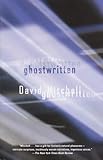 Mitchell told fans at 2014’s Edinburgh Book festival that his writing has become “an exercise in world building and cosmology.” With the lengthy and ambitions Bone Clocks, he revealed the extent of that exercise by referencing characters from all of his work, back to his 1999 debut Ghostwritten. Though it would be difficult to gage the extent to which his megaverse was planned, Mitchell has made it clear that a single plot overarches everything, down even to his most quotidian Black Swan Green. Lovers of Cloud Atlas are familiar with Mitchell’s tendency to write novels as a series of interlacing plots, where a young character in one segment might be an old man in another. But what Bone Clocks introduced was design on an altogether different scale: a set of death-defying interlopers engaged in a cosmic war across time, whose antics, it turns out, have been crashing through the scenery of each successive novel.
Mitchell told fans at 2014’s Edinburgh Book festival that his writing has become “an exercise in world building and cosmology.” With the lengthy and ambitions Bone Clocks, he revealed the extent of that exercise by referencing characters from all of his work, back to his 1999 debut Ghostwritten. Though it would be difficult to gage the extent to which his megaverse was planned, Mitchell has made it clear that a single plot overarches everything, down even to his most quotidian Black Swan Green. Lovers of Cloud Atlas are familiar with Mitchell’s tendency to write novels as a series of interlacing plots, where a young character in one segment might be an old man in another. But what Bone Clocks introduced was design on an altogether different scale: a set of death-defying interlopers engaged in a cosmic war across time, whose antics, it turns out, have been crashing through the scenery of each successive novel.
 When he announced that a new, shorter book was set to debut only a year after The Bone Clocks, fans correctly anticipated that Slade House would deepen Mitchell’s investment in that larger scheme. Released just in time for Halloween, Slade House has quickly sparked comparisons to Henry James’s The Turn of the Screw — a literature critic’s ghost story, a haunted-house yarn the glamor of which was underpinned by plot and language that could bear up under the stuffiest academic scrutiny.
When he announced that a new, shorter book was set to debut only a year after The Bone Clocks, fans correctly anticipated that Slade House would deepen Mitchell’s investment in that larger scheme. Released just in time for Halloween, Slade House has quickly sparked comparisons to Henry James’s The Turn of the Screw — a literature critic’s ghost story, a haunted-house yarn the glamor of which was underpinned by plot and language that could bear up under the stuffiest academic scrutiny.
Mitchell has been upfront about his exasperation with critics who pit realism against everything else, as if the sort of writing where souls can be eaten and bodies shed like cicada shells needed to earn special literary stripes in order to be taken seriously. He told the Edinburgh Book Festival he likes “to use genre as a tool, like style, structure or a character. Where does it say a book has to remain within a single genre?” and The Paris Review that “When something is two-dimensional and hackneyed, this is how to fix it: identify an improbable opposite and mix it, implausibly, into the brew.” Mitchell has proved himself a master of the improbable brew, but the question is whether the books that have resulted are freshening agents, or just a cheap attempt to spike the punch.
Slade House cooks up its mixture with euphoric technical complexity and flourish. Set at nine-year intervals from 1979 to 2015, it is composed of five interlocking narratives centered around a mysterious “small black iron door,” and the magnificent, trippy, horrifying mansion to which it leads. A succession of sympathetic loners are lured into Slade House by its malevolent occupants, treated to a disorienting phantasmagoria that mixes their deepest fantasies of popularity and inclusion with their worst fears, and finally tricked into bringing about their own demise.
We hear the story through their voices, and each is masterfully rendered, deeply human. The 13-year-old Nathan Bishop, whose autism makes him insensitive to the subtle difference between a quirky hostess and a murderous schemer, the oafish lonelyheart policeman whose subtle racism he would blame on hard experiences on the beat, and the self-conscious college student Sally Timms are each cohesive and distinct.
For every character, Slade House morphs into a tailor-made nightmare. I found Sally’s haunting at a raucous party the most alarming and immediate, perhaps because I grew up listening to some of the same music. But more likely the sting came from her voice’s mixture of devastating self-examination and quippy humor: “Slade Alley can’t be more than three feet across,” she observes on approach to the house, “A properly fat person — fatter than me, I mean — couldn’t get past someone coming the other way.” And when she snuffs a proposition from an attractive partygoer: “Off he goes, and screw you, Isolde Delahunty at Great Malvern Beacon School for Girls and your platoon of body-fascist Barbies…screw all of you, wherever you are this evening, because I…just turned down a bronzed Australian surfer demigod…”
Yet the culmination of each story contains an obligatory nod the meta-world of Bone Clocks, and it is there that Mitchell’s ambition starts to make a messy feast of his talent. Examining Slade House’s grandfather clock, whose face bears no hands but only the words “Time is, Time Was, Time is Not,” Sally Timms quips that the clock is “Highly metaphysical; deeply useless.” At worst, this epithet could be applied to Mitchell’s language just at the passages when Slade House reaches its highest emotional pitch. At key moments in each character’s adventures there are debilitating pauses for exposition, linking Slade House’s dark little nightmare world to the wider one we heard all too much about in Bone Clocks.
Words like “lacuna,” “orison,” and worst of all, “psychovoltage” diffuse the physical terror of Mitchell’s best scenes with obtuse, jargony pinpricks. That the term “lacuna” is lifted from medieval metaphysics and “orison” from Hamlet’s banter with Ophelia in Act III scene i makes them no more interesting: pedigree adds little when species are awkwardly crossed, and there is nothing of Hamlet’s earthy nightmare in the clinical use to which Mitchell puts his meta-world’s argot, explaining away the wonderful ghost stories he’s taken such care to weave in each successive chapter.
At best, “highly metaphysical; deeply useless” might still be said of the interlaced world Mitchell is making. Metaphysical and useless, yes, but nothing is as essential as the inessential, and a little willful suspension of distaste allows us to luxuriate in Mitchell’s superfluities. The Yeats-like unifying project he’s taken on is initially thrilling in its apparent scope. And though his machinations are luxurious, underneath the heavy-handed codswallop is the pungent flavor of raw voices, coming from characters we recognize from the street. As long as his books are populated by such real people, Mitchell will deserve his following, but he is in danger of a fatal shark-jumping accident.
 In The Thousand Autumns of Jacob De Zoet, Mitchell allowed himself to suggest the unknown, and the scenes where Orito explores Enomoto’s caves are therefore riper with terror than any of Slade House’s “lacuna” scenes. Narrow paths curve into darkness, statues drip with blood, and Orito takes away only her fear and a growing list of questions about the people who built the tunnels. But Mitchell’s ambition to weave a meta-narrative has forced his newer books to reveal what is best left hinted. With their many external references, The Bone Clocks and Slade House are artsier novels than those that came before, but far less artful. In them Mitchell reads like a remodeler who stubbornly insists that the gaudy corridors he’s built between his mansions are the real architectural triumph.
In The Thousand Autumns of Jacob De Zoet, Mitchell allowed himself to suggest the unknown, and the scenes where Orito explores Enomoto’s caves are therefore riper with terror than any of Slade House’s “lacuna” scenes. Narrow paths curve into darkness, statues drip with blood, and Orito takes away only her fear and a growing list of questions about the people who built the tunnels. But Mitchell’s ambition to weave a meta-narrative has forced his newer books to reveal what is best left hinted. With their many external references, The Bone Clocks and Slade House are artsier novels than those that came before, but far less artful. In them Mitchell reads like a remodeler who stubbornly insists that the gaudy corridors he’s built between his mansions are the real architectural triumph.
Admirably, he has left nothing sacred in his conquest of genre-fiction territories, explicitly comparing his work to that of J.R.R. Tolkien, the master world-architect himself. Mitchell even included a character called Bombadil in Slade House’s final chapter, as if to assure us he knows what he’s doing, that no shrines to Tolkien will be left to gather dust during his incursion into hallowed ground. But to throw down that gauntlet is to invite comparison with a man who was a consummate novelist first, and mythology-spinner second. According to accounts from his friends, it took Tolkien 12 years to write and revise The Lord of the Rings, and obsessed with background as he was, most of that time was not spent tightening up a meta-scheme of cohesive self-references (otherwise why would there be so many Unfinished Tales, so many loose ends in The Silmarillion?), but making sure the characters and language were rich, authentic, and human. By contrast, Mitchell looks like a hobbit-sized challenger talking through a tall hat.
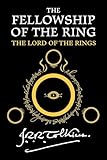 Above all, Tolkien knew what to leave unsaid. To name a specific example, the “Watcher in the Water” that guards the entrance to Moria in The Fellowship of the Ring is horrible precisely because we know neither what it is nor how it came to be there, apart from some scrawled suggestions in an abandoned journal. The entry reads: “The Watcher in the Water took Óin. We cannot get out.” More terror is crammed into those two lines then into the whole of Slade House, because Tolkien has left space for our imaginations to populate the darkness. But Mitchell is addicted to ripping back the veil. His evil Grayer twins become less frightening the more we know about them, and their soliloquizing at each chapter’s climax makes them something worse than poorly-written antagonists: they become well-written antagonists too well explained. Their nightmare mansion ultimately disappoints, like a haunted house with all the lights turned on.
Above all, Tolkien knew what to leave unsaid. To name a specific example, the “Watcher in the Water” that guards the entrance to Moria in The Fellowship of the Ring is horrible precisely because we know neither what it is nor how it came to be there, apart from some scrawled suggestions in an abandoned journal. The entry reads: “The Watcher in the Water took Óin. We cannot get out.” More terror is crammed into those two lines then into the whole of Slade House, because Tolkien has left space for our imaginations to populate the darkness. But Mitchell is addicted to ripping back the veil. His evil Grayer twins become less frightening the more we know about them, and their soliloquizing at each chapter’s climax makes them something worse than poorly-written antagonists: they become well-written antagonists too well explained. Their nightmare mansion ultimately disappoints, like a haunted house with all the lights turned on.
With each successive, elaborately explained novel, there is a paradoxical sense that Mitchell’s world is shrinking, because the rigging he’s so intent on fastening between storylines is clogging up the gaps that should be occupied by the unknown. Nothing can swoop down on us without getting caught in the wires. Titles like Cloud Atlas hint that Mitchell is undertaking a quest to map the changeable world, to search for suggestions of coherence among what is cloudy, turbulent, and disordered. But just as the psychedelic gobbledygook of Yeats’s A Vision added nothing to the power of his poetry (it only gave theorists the opportunity to point to some prose passage that was supposedly the origin of a poem, as if that proved anything), Mitchell’s Horologist wonderland seems like an escape from the literary into the clever. Discovering one of his linked plots gives you a Sudoku-solver’s thrill, but this pleasure would be hard to call artistic. Billed as a suggestion about the interconnectedness between us all, such moments register instead as self-satisfied technical flourishes, easter eggs.
As Mitchell gains power and the volume of his work expands, we have to hope he exercises a proportionately large restraint. Tolkien’s world-creating mechanism began with people and with language: He and C.S. Lewis used to play Scrabble in Elvish, a cultural artifact which grew organically alongside Tolkien’s lands and characters, instead of being thrust upon them in literary retrospect in the manner of Mitchell’s Horology. In terms of creative impetus, this retrograde fiddling with Mitchell’s own world could prove to be, as Sally Timms puts it, “a fatal mistake, like Orpheus looking back…”
To demand that Mitchell walk the same road as even his greatest predecessors would be inane when his explicit desire is to innovate, but as he said himself, the watchword of the world-builder, even as he mixes improbable elements, must be a plausibility that outwrestles the improbable. Plausibility means a sense of rightness to experience, and Slade House, in spite of its pristine characterization, forgets that the experience of horror starts with the unknown. Instead of dark shadows, he gives us exposition, and as tempting as it must be to forget, Mitchell should have remembered that readers will always prefer to wander the maze’s edges than to sit down for a lecture at its center.


